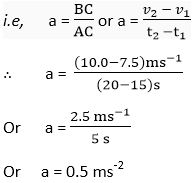Short Answer Questions - II - 3 Marks
Q1. Differentiate between distance and displacement.
Ans.
|
Distance |
Displacement |
|
1. It is the length of the actual path covered by an object, irrespective of its direction of motion. 2. Distance is a scalar quantity. 3. Distance covered can never be negative. It is always positive or Zero. 4. Distance between two given points may be same or different for different path chosen. |
1. Displacement is the shortest distance between the initial and final positions of an object in a given direction. 2. Displacement is a vector quantity. 3. Displacement may be positive, negative or zero. 4. Displacement between two given points is always the same. |
Q2. What are the uses of a distance-time graph?
Ans. The various uses of a distance-time graph are as follows:
(a) It tells us about the position of the body at any instant of time.
(b) From the graph, we can see the distance covered by the body during a particular interval of time.
(c) It also gives us information about the velocity of the body at any instant of time.
Q3. Draw a velocity versus time graph of a stone thrown vertically upwards and then coming downwards after attaining the maximum height.
Ans. During upward motion, acceleration = - g and during downward motion acceleration = + g. Times of upward and downward motion is equal. Also initial and final velocities are equal to 
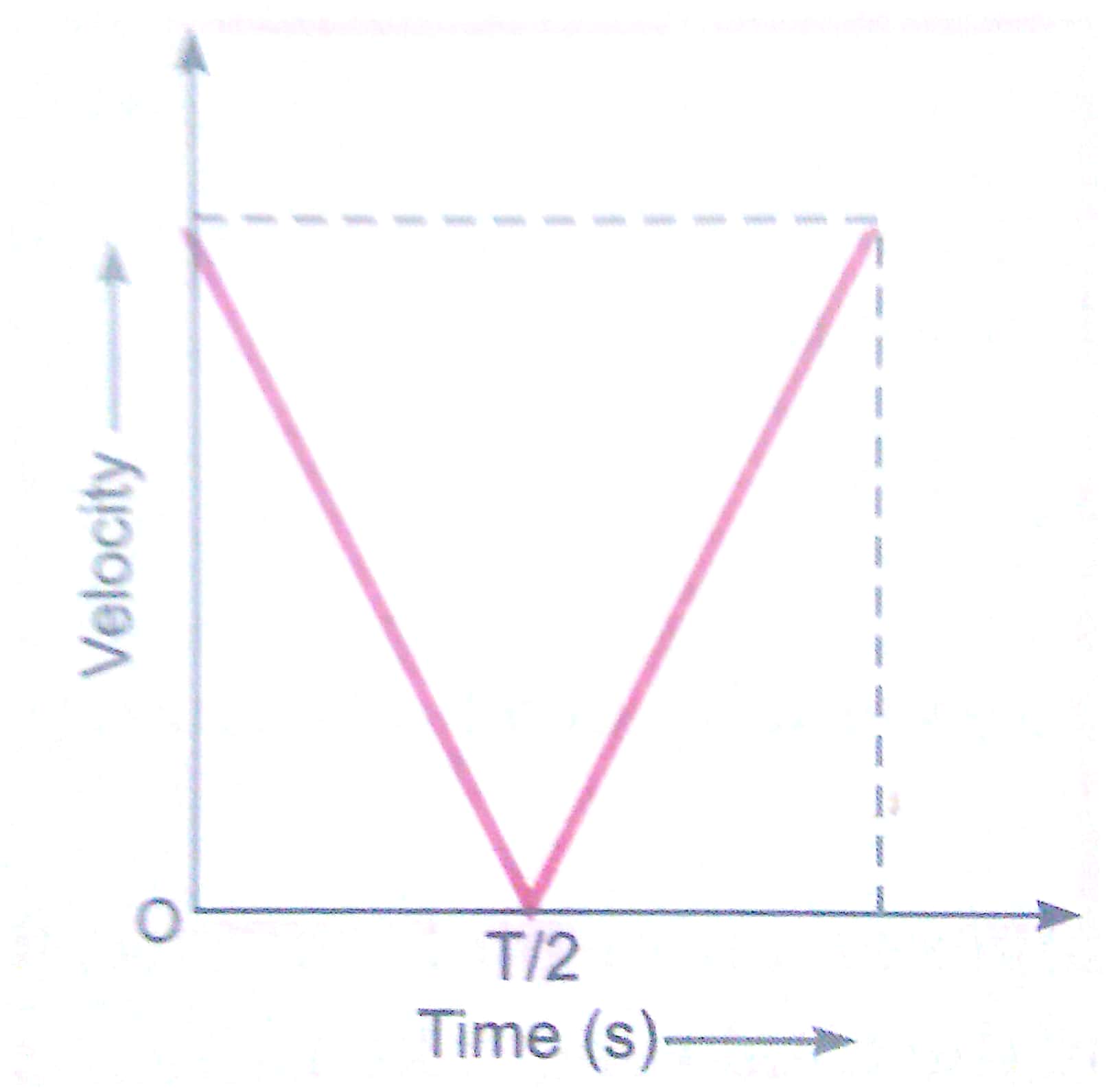
Q4. The data regarding the motion of two different objects P and Q is given in the following table. Examine them carefully and state whether the motion of the objects is uniform or non- uniform.
|
Time |
Distance travelled by |
Distance travelled by |
|
9:30 am 9:45 am 10:00 am 10:15 am 10:15 am 10:45 am 11:00 am |
10 20 30 40 50 60 70 |
12 19 23 35 37 41 44 |
Ans. We can see that the object P covers a distance of 10 m in every fifteen minutes. In other words, it covers equal distance in equal interval of time. So, the motion of object P is uniform. On the other hand, the object Q covers 7 m from 9:30 am to 9:45 am, 4 m from 9:45 am to 10:00 am, and so on. In other words, it covers unequal distance in equal interval of time. So, the motion of object Q is non-uniform.
Q5. How will you show that the slope of displacement-time graph gives velocity of the body?
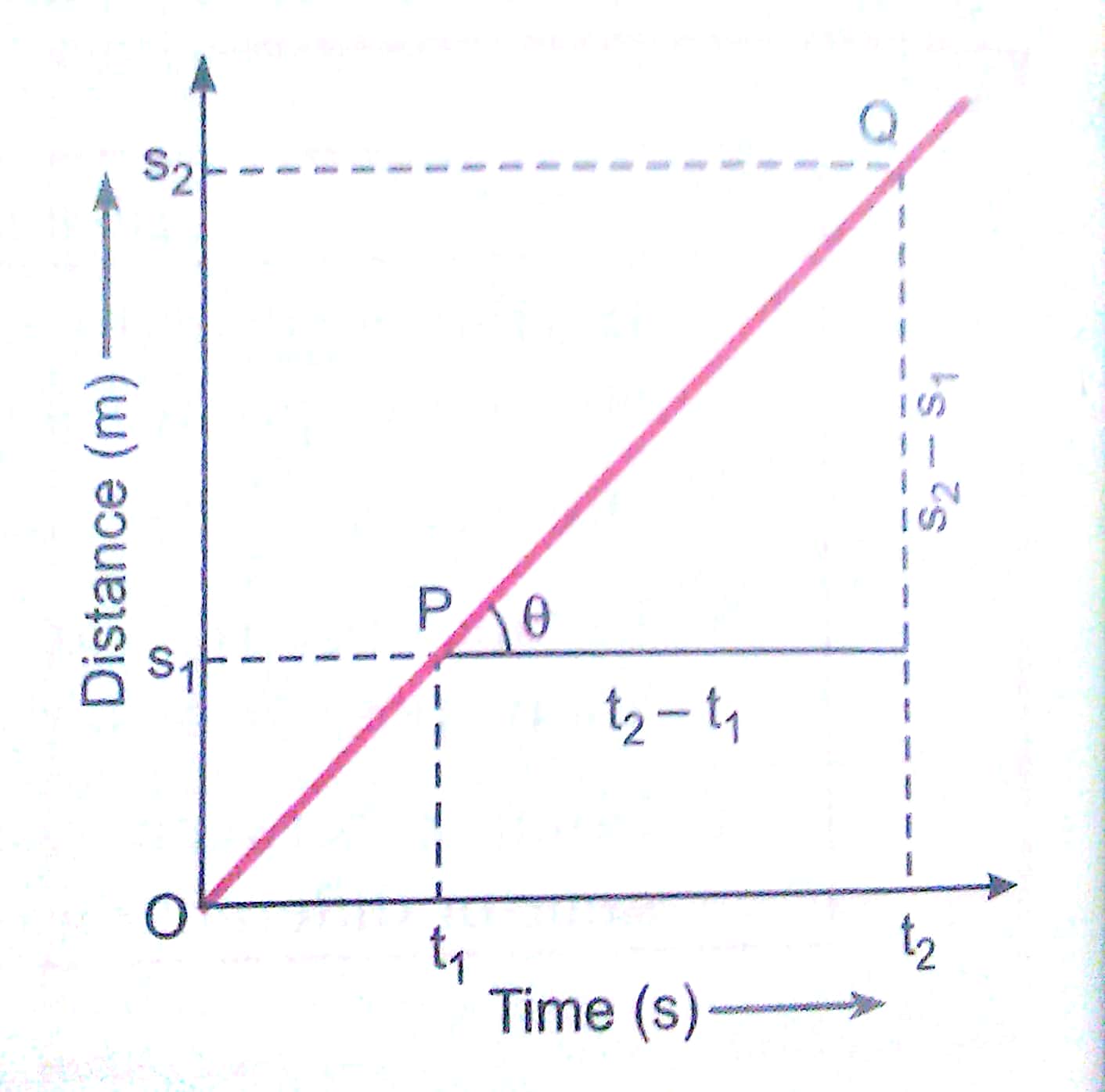
Ans. The adjoining figure shows the displacement-time graph for a body moving with uniform velocity. Clearly, it covers distance s1 and s2 at times t1 and t2 respectively.

As  is velocity, it y, so the slope of the distance-time graph gives velocity of the body.
is velocity, it y, so the slope of the distance-time graph gives velocity of the body.
Q6. What are the characteristics of distance-time graph for an object moving with a non-uniform speed?
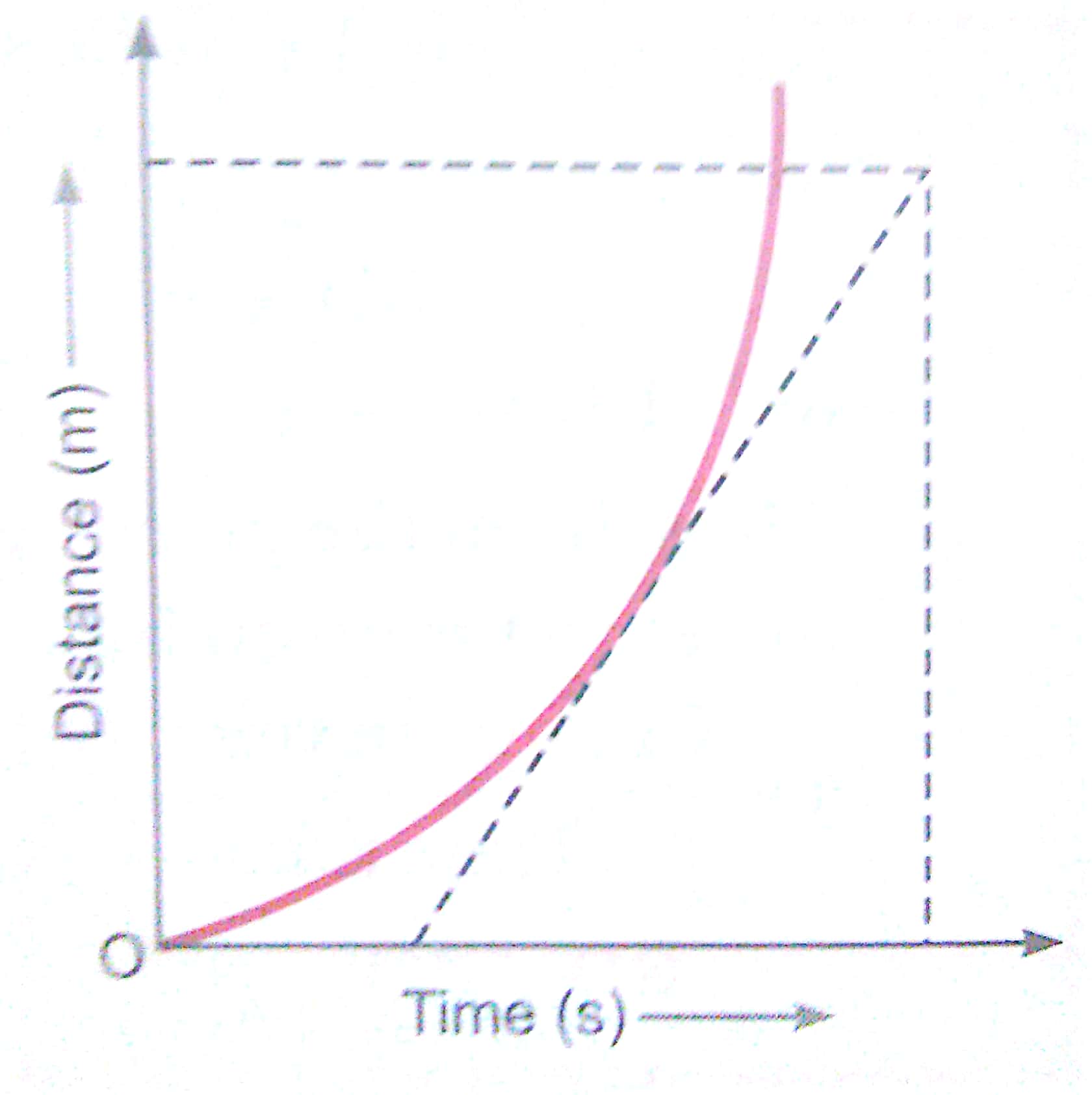
Ans. The characteristics of distance-time graph for a non –uniform speed are:
(i) It is always a curve (parabola).
(ii) The speed of the moving object at any point is given by the slope of the tangent to the curve at that point.
Q 7. Given below is the velocity-time graph for the motion of the car. What does the nature of the graph show? Also find the acceleration of the car.
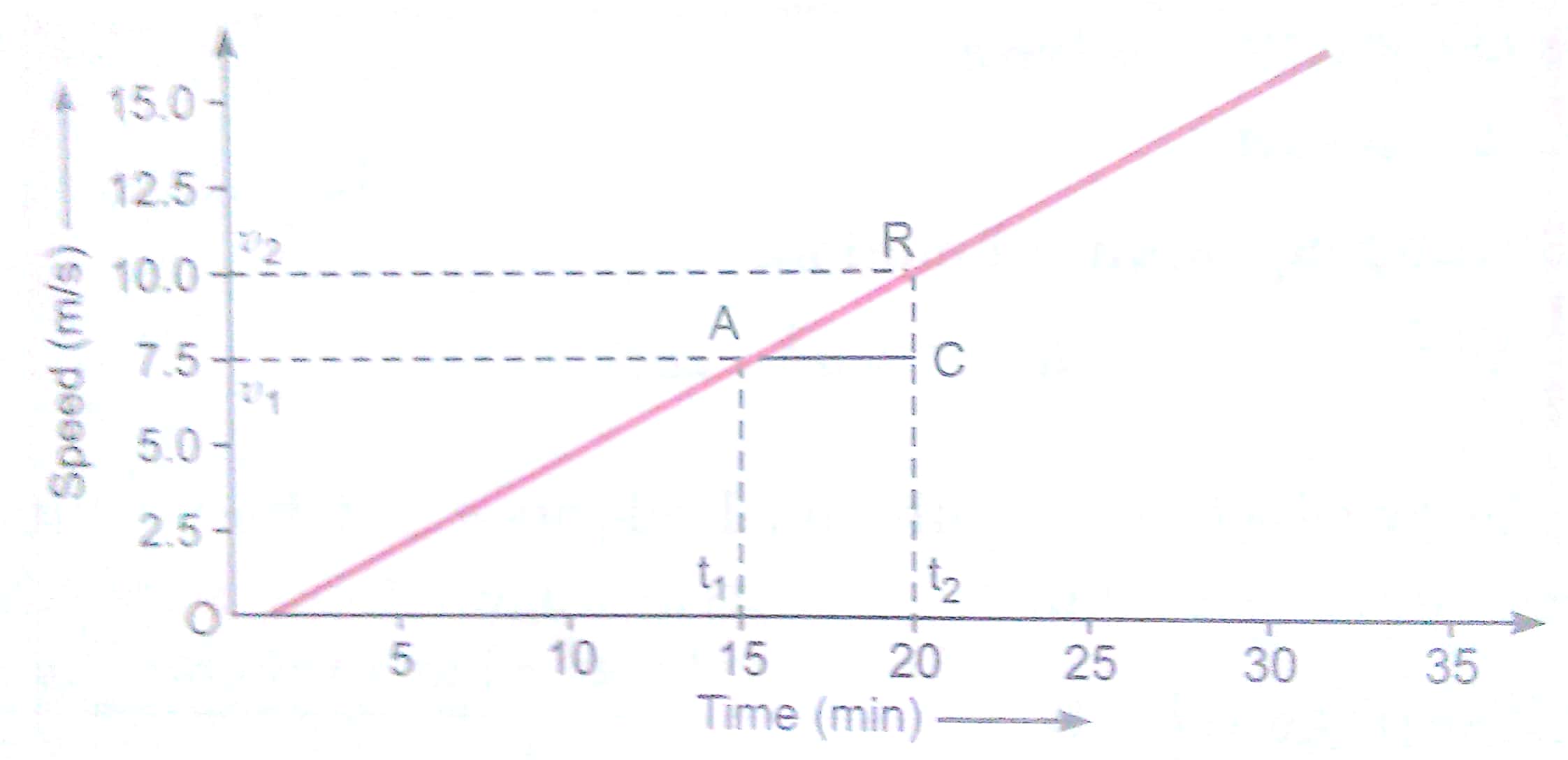
Ans. The nature of the graph shows that velocity changes by equal amounts in equal intervals of time. For a uniformly accelerated motion, velocity-time graph is always a straight line.
As we know, acceleration is equal to the slope of the graph
